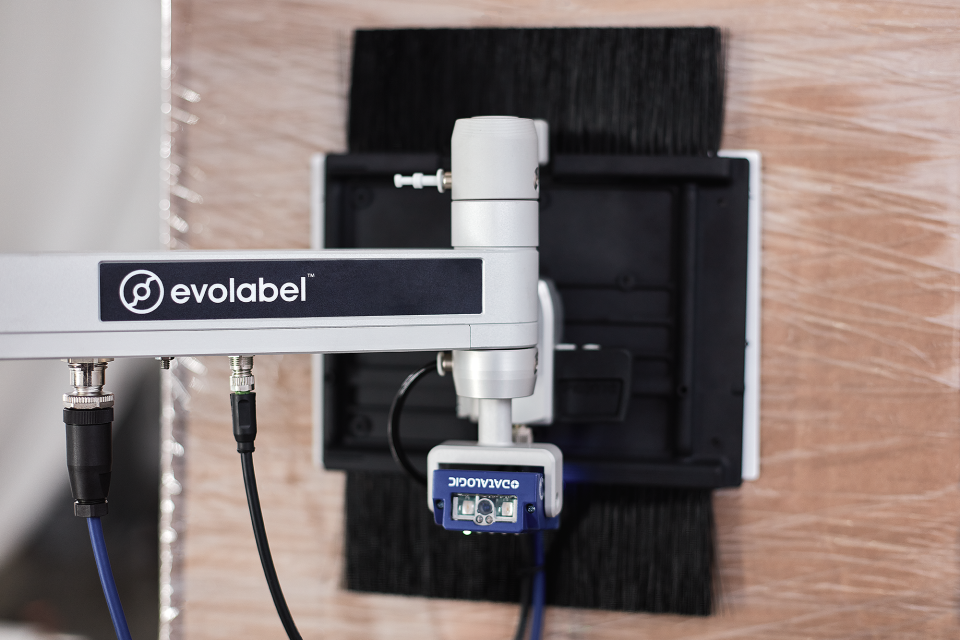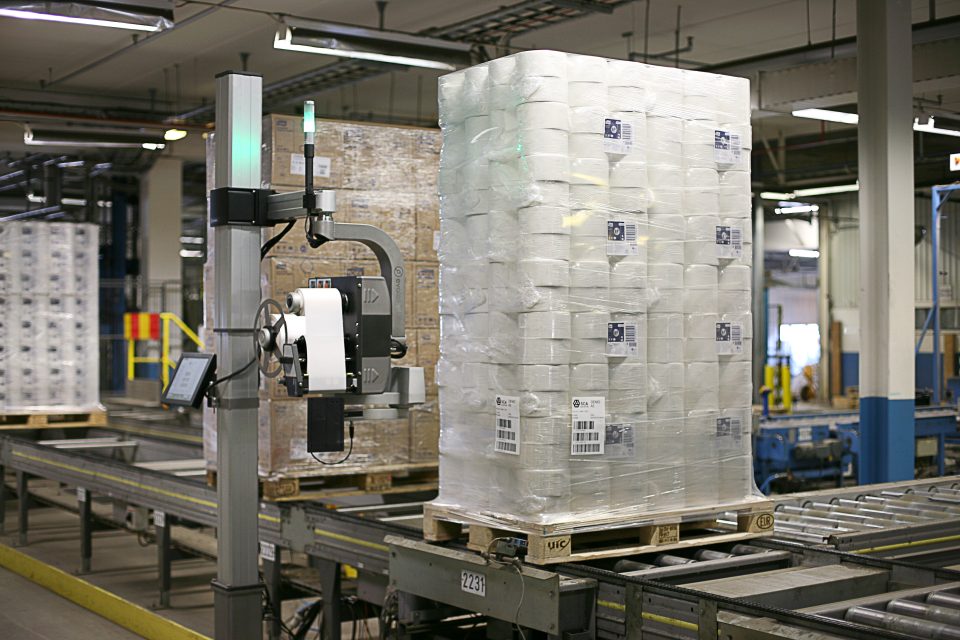As automation has swept through product and pallet labelling, it could be argued that some firms and their employees have been left out in the cold – hand labelling pallets in extreme conditions where temperatures have to be down at minus 20 degrees Celsius. Many pallet labelling machines struggle to cope at such temperatures and the harsh conditions prevent food companies from working at maximum efficiency.
Thanks to creative and innovative engineering from Sweden, a new pallet labeller is on the market which is tough enough to cope in conditions which bring a shiver to most employees. Evolabel has developed a revolutionary pallet labelling applicator, FlexWipe, designed to function efficiently in tough industrial environments. Installing this equipment in a chilled or frozen food labelling area has now removed any need for operators to manually label pallets or indeed companies to make extra investments on building specialist temperature-controlled labelling areas within their warehouses.
The cold temperature labeller has evolved from standard print and apply equipment that has been engineered in a way which allows it to work at temperatures as low as minus 20 degrees Celsius. Some of the resulting modifications have clear advantages for food manufacturers aiming to maximise production line efficiencies. For example, removing clutches and the need for a vacuum pump leads to significant increases in up time and therefore helps to maximise a business’s assets. Another significant cost benefit includes a lowering of maintenance costs due to the fact that once the pneumatic movement has been reduced then less frequent servicing is required too. Such a pallet labeller is claimed to be 5-10 years ahead of its time.
Once products are on a pallet it is essential that traceability is clear and easy. This type of labelling solution, which is driven by two motors working in two different directions to give a finite position for the labels, plays a vital role in the supply chain by ensuring accurate positioning of labels and can provide labelling which creates a unique identity – key to shipments, warehousing, expiry dates and storage location. This would enable companies to comply with the strict GS1 SSCC barcodes regulation.
This pallet labelling system is designed to run in direct thermal mode and is safe, user-friendly, extremely compact, fast and ensures that an operator cannot get stuck between applicator arm and pallet. It negates any need for expensive guarding and has the ability to provide single pallet labelling on up to three sides or dual pallet labelling without requiring the pallet to stop thanks to its motorised and controlled movements and lightweight arms.
The food chain would also benefit from an additional key attribute of this system – its flexibility. It easily deals with challenging conveying conditions as well as temperatures. Correct pallet labelling can be achieved even in situations where pallets are not sent down the conveyor with uniform spacing. The ability of the same applicator to swing in different directions – front, back and side as it detects the pallet moving past – allows food companies to adapt their labelling requirements to suit any given production run. Software is easily programmable and user-friendly.
Guiding brushes can also be attached in order to improve the wipe function to the point where it copes with pallets that have been unevenly stacked in a kind of ‘jenga’ effect. The adaptation of adding a ‘brush assist function’ ensures that the whole label is stuck on fully and effectively no matter how non-uniformly the product on the pallet is stacked.
Happily, because the system originated from standard print and apply equipment, servicing is no more complex than usual. The software allows for dial-in remote app support and monitoring either by the original supplier, a networked local firm or in some cases by the customer themselves.
As the food processing industry is evolving quickly and digital manufacturing is playing a greater role day by day, we expect that within six months food companies will be able to source a pallet labeller that not only functions well at low temperatures but that also incorporates linear adjust movements so that it suits a conveyor delivering pallets in various heights and widths. That’s the future for low and sub-zero temperature pallet labelling.
Email Our Team
* Please complete all fields



